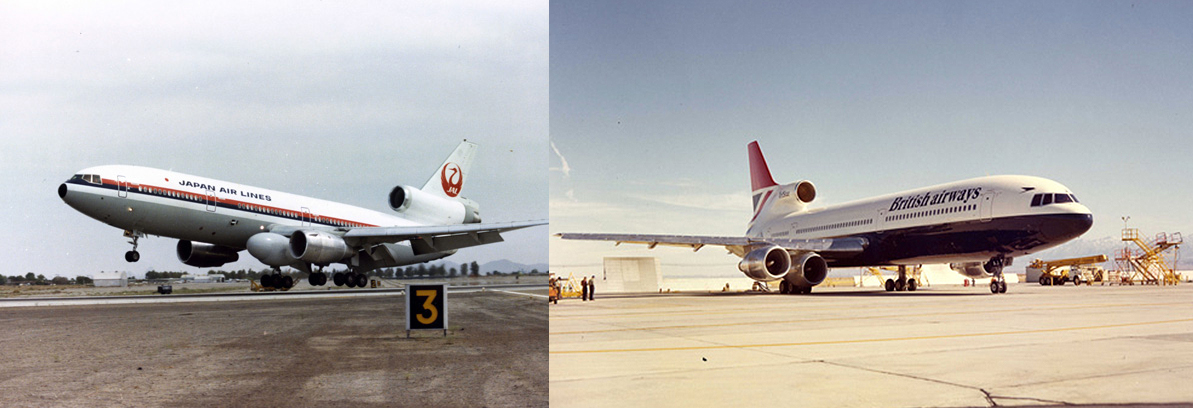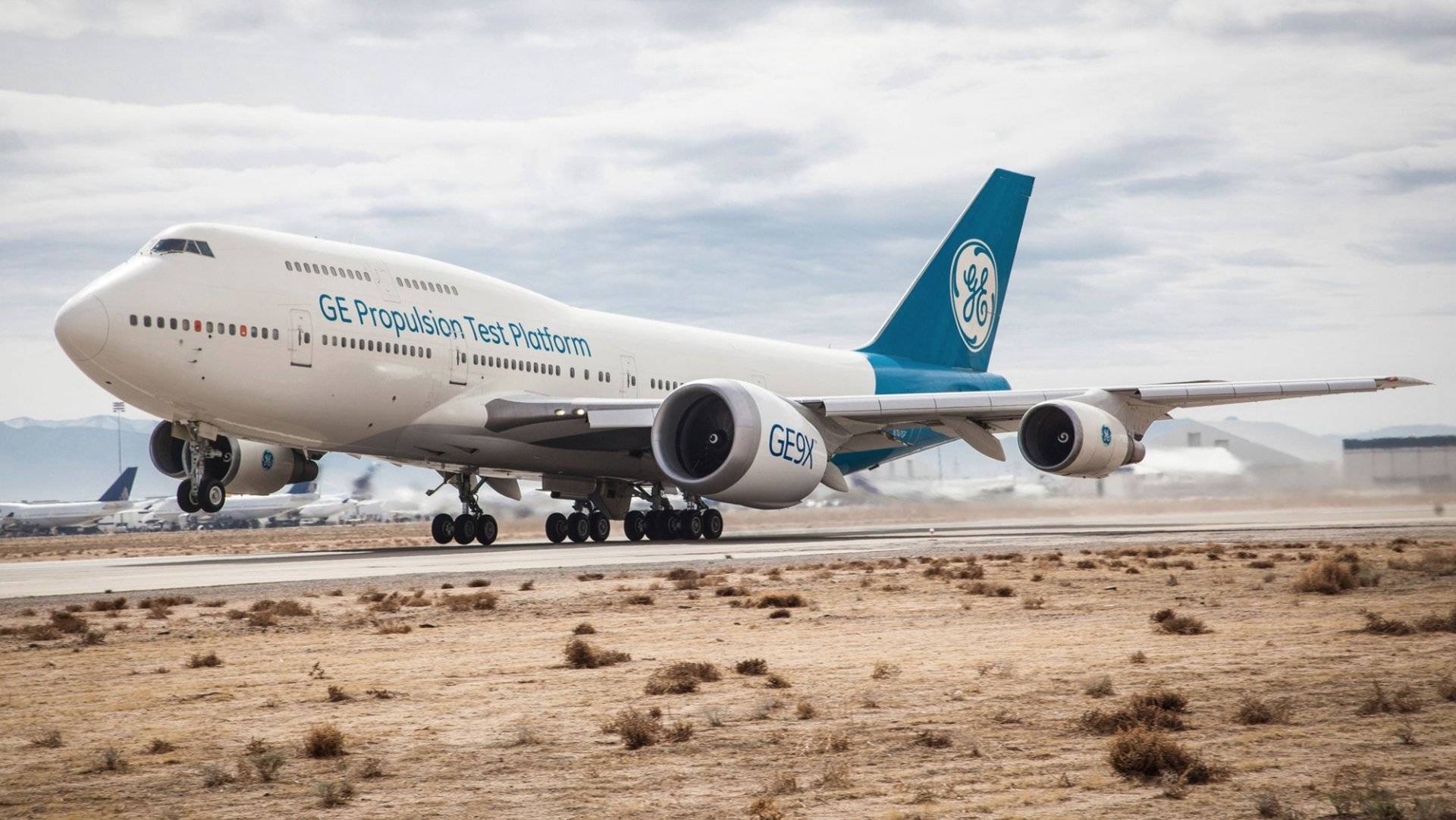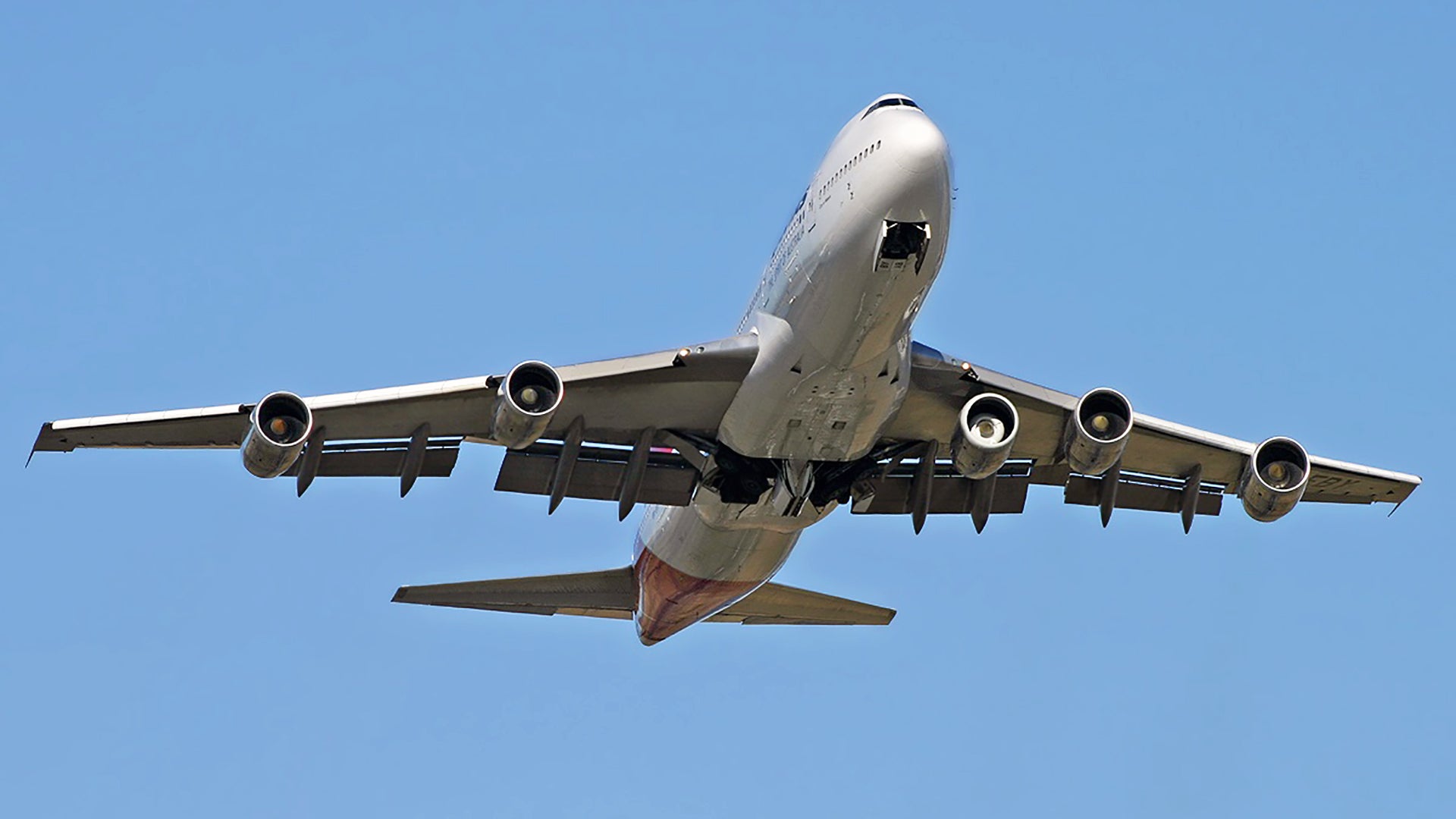You arrive at your gate just ahead of boarding time. A gleaming 747 Jumbo Jet fills the terminal window. You saunter over to take in your marvelous aerial chariot before stepping onboard. You quickly do a double take—there is a 5th engine strapped under one of its wings!
Yes, this really happened, multiple times. The 747 was designed with a so-called ‘5th pod’ capability in which it can lug a spare engine aloft, even on a revenue flight. The aircraft’s performance is impacted a bit in this configuration—with fuel economy being the biggest factor—but the aircraft’s handling characteristics remain largely the same.
Virgin Orbit aims to use its 747-400 named ‘Cosmic Girl’ as a first stage launch platform that will ferry its ‘LauncherOne’ rocket up into the flight levels before sending it and its pricey payload on its way into space. The pylon the company built for the aircraft to accommodate this exciting mission is just entering combined flight testing out of Victorville, California.
Virgin Orbit’s use of a 747 was quite ingenious as they were not only able to leverage the jet’s outstanding performance, large support network, and weight-lifting abilities, but also its latent provision for attaching a large pylon under its wing as part of the 5th Pod engine ferrying system. In doing so they didn’t have to totally re-engineer the aircraft to accommodate a heavy-duty hardpoint.
The 5th Pod system came out of a requirement to move large and expensive jet engines around on short notice and sometimes to remote locales to support fast-moving airline operations. When the 747 was designed there weren’t really options for rapidly shipping one of its high-bypass turbofan engines if need be. Instead, it would have to go by sea and land, which could take weeks, sidelining an expensive revenue producing aircraft in the process. But the best aircraft to ship one of the Jumbo Jet’s powerplants was another Jumbo Jet. This is where the 5th pod option came into play.
Qantas is most famous for using it, including during some revenue flights, which has clearly prompt a lot of questions from passengers. Qantas even made a little video about its use of the 5th Pod:

It’s also worth noting that the 747 can
fly
with three engines, as well. So, while there is the 5th Pod option, there is also a three engine option when it comes to receiving a fresh motor and getting back into service.
Over the 747’s nearly 50-year long career other airlines also leveraged the 5th Pod capability and did so repeatedly. But the fact of the matter is that this feature isn’t really unique to the 747. Other airliners also had or have the ability to externally transport a spare engine externally, including the L-1011, DC-10, 707, DC-8, and VC-10.

Today there are far more robust and efficient logistical networks that crisscross the planet than there were decades ago. There are also multiple types of heavy-lift cargo aircraft available to move engines around if need be. The support infrastructure for airliners is far more mature, as well, and jet engines are even more reliable. So it all comes down to cost. What was a necessity decades ago is less so today and that’s why, like other aviation innovations, transporting extra engines under airliners’ wings is almost entirely a thing of the past.
Regardless, with these obscure bits of aviation history in mind, it’s a bit puzzling how a space-launch concept that uses the 747 as a first stage hasn’t come into existence sooner. And beyond that, why haven’t these engine-hauling pylons on airliners been leveraged for other work?
The defense/military applications, in particular, seem highly enticing, from hanging modular sensor pods on a big jet to carrying large weapons over long distances. The U.S. has the mighty B-52 to do much of its outsized weapons carrying work, but adapting commercially available 747s or other airliners with similar capabilities seems like a logical and downright economic step. This is especially true during the Cold War era where there were far more elaborate 747-based weapons concepts that gained some traction.
With second generation 747s heading into the twilight of the airliner careers, an increasing number of airframes will be available for conversion to take on more exotic missions. We have already seen the type put to work as an engine testbed and now we are seeing it being used as a space launch system. But one can only think that there is a lot of untapped potential in those 5th Pod hardpoints.

I have a feeling we will be seeing a lot more of them in the not so distant future.
Author’s note: A big thanks to our friend Scott Lindsell for allowing us to post his Quantas 747 shot at the top of this post. Make sure to check out more of his awesome work here.
Contact the author: Tyler@thedrive.com
